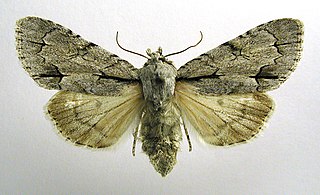
The dark dagger is a moth of the family Noctuidae. The species was first described by Michael Denis and Ignaz Schiffermüller in 1775. It is distributed throughout Europe, Turkey, the Near East, the European part of Russia, southern Siberia, the Ural, the Russian Far East, the Korean Peninsula, China and Japan (Hokkaido).

Isotoma is a genus of annual and perennial herbs in the family Campanulaceae and are native to Australia and New Zealand.
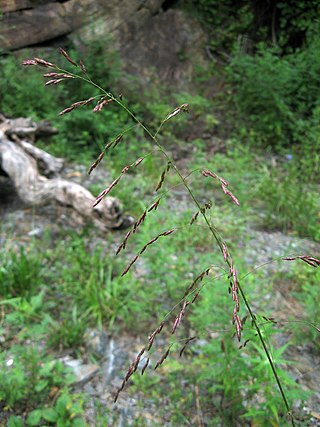
Tridens flavus, the purpletop tridens, red top, or greasegrass, is a large, robust perennial bunchgrass native to eastern North America.

Isotoma is a common genus of springtails, the type genus of the family Isotomidae, containing the following species:

The trident bat or trident leaf-nosed bat is a species of bat in the family Hipposideridae. It is widely distributed in the Middle East, South and Central Asia, and North, East, and Central Africa. Its natural habitats are subtropical or tropical dry forests, dry savanna, subtropical or tropical dry shrubland, caves and hot deserts.
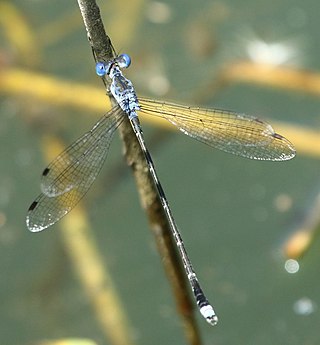
Lestes tridens is a species of damselfly in the family Lestidae, the spreadwings. It is known commonly as the spotted spreadwing. It is native to much of the southern half of Africa, where it is widespread. It lives along the edges of lakes and swamps. It is not considered to be threatened.
Pratia is a formerly recognized genus of flowering plants in the family Campanulaceae, native to Asia, Australia and New Zealand. Along with other genera, such as Hypsela and Isotoma, it is now included in Lobelia.

Chondrula tridens is a species of air-breathing land snail, a terrestrial pulmonate gastropod mollusk in the family Enidae.

Tridens is a genus of perennial grasses in the family Poaceae native to the Americas.
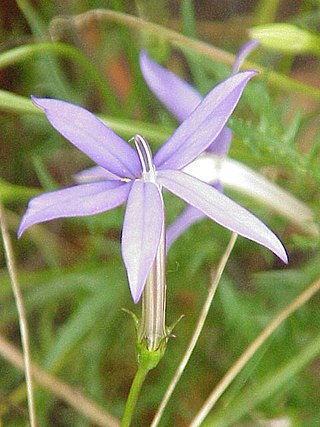
Isotoma axillaris, commonly known as rock isotome or showy isotome, is a small herbaceous perennial in the family Campanulaceae. It usually has blue or mauve star-shaped flowers from September to May. It may also be called blue star, star flower, or laurentia.
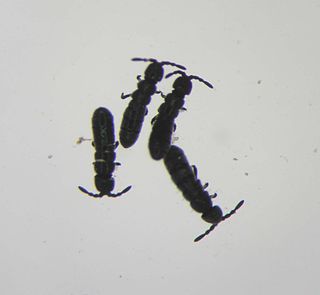
The glacier flea is a species of springtail. D. saltans is the common glacier flea, but there are several springtail species that are also called glacier fleas, and which catch the attention on snow surfaces due to their dark body colouring, their hopping motion and the fact that they often gather in large groups. These include, for example, Desoria nivalis or Vertagopus alpinus.

Isotoma hypocrateriformis, commonly known as Woodbridge poison, is a small herbaceous perennial in the family Campanulaceae native to Western Australia.
Isotoma luticola is a small herbaceous plant in the family Campanulaceae native to Western Australia.

Isotoma petraea, commonly known as rock isotome, is a small, herbaceous plant in the family Campanulaceae occurring in arid regions of Australia. It has single, purplish-blue flowers on smooth, slender branches from February to November.

Isotoma scapigera, commonly known as long-scaped isotome, is a small herbaceous plant in the family Campanulaceae native to Western Australia.

Isotoma fluviatilis, the swamp isotome or blue star creeper, is a small herbaceous perennial plant in the family Campanulaceae, native to Australia.

Isotoma viridis is a species of elongate-bodied springtails in the family Isotomidae. It has a Holarctic distribution, often found in meadows and agricultural fields. The species feeds on fungal hyphae and decaying leaves.
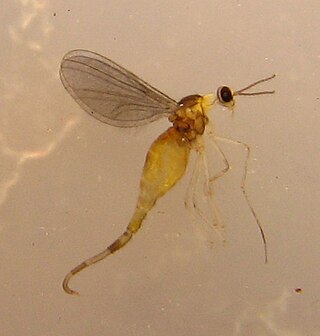
Winnertzia is a genus of gall midges and wood midges in the family Cecidomyiidae. There are more than 90 described species in Winnertzia.
The Somalian trident bat is a species of bat found in the Horn of Africa.















